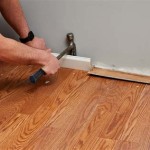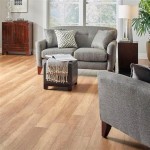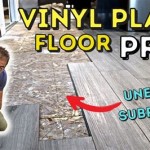Vinyl Sheet Flooring Cost Per Square Foot: A Comprehensive Guide
Vinyl sheet flooring stands as a popular choice for homeowners and businesses seeking a durable, water-resistant, and cost-effective flooring solution. Its versatility allows for installation in a wide range of spaces, from kitchens and bathrooms to laundry rooms and even basements. Understanding the costs associated with vinyl sheet flooring, specifically the cost per square foot, is crucial for budgeting and planning any flooring project.
This article will delve into the various factors that influence the cost of vinyl sheet flooring, providing a detailed breakdown to aid in making informed decisions. We will explore the different types of vinyl sheeting, the varying quality levels, installation expenses, and additional considerations that impact the overall price. This detailed exposition will equip consumers with the knowledge necessary to navigate the market and accurately estimate the cost of their vinyl sheet flooring project.
Factors Influencing the Cost of Vinyl Sheet Flooring
Several key factors directly affect the cost per square foot of vinyl sheet flooring. These factors range from the material composition and quality to the complexity of the installation process and the geographic location of the project.
Material Composition and Quality: The type of vinyl and the manufacturing process significantly impact the price. Vinyl sheet flooring typically consists of multiple layers: a wear layer, a print layer, and a backing layer. The thickness and composition of the wear layer are particularly critical. A thicker wear layer provides greater durability and resistance to scratches and scuffs, thus commanding a higher price per square foot. High-quality vinyl often incorporates advanced manufacturing techniques that enhance its resilience and lifespan.
The print layer is responsible for the flooring's aesthetic appeal, mimicking wood, tile, or stone. Higher-quality prints offer more realistic and detailed patterns, also affecting the price. The backing layer provides stability and cushioning, and its composition can also influence the overall cost. Some vinyl sheets have a felt or fiberglass backing, while others have a more advanced cushioned backing which can improve comfort and sound absorption, adding to the cost.
Installation Complexity: The complexity of the installation plays a crucial role in determining the final cost. Straightforward installations in square or rectangular rooms are generally less expensive than more intricate installations involving oddly shaped rooms, stairs, or custom patterns. The need for extensive subfloor preparation can also significantly increase the installation cost. If the existing subfloor is uneven, damaged, or requires leveling, additional labor and materials will be needed, adding to the overall expense.
In addition, features like intricate inlays, borders, or custom cuts require skilled installers and more time, resulting in higher labor charges. The removal and disposal of old flooring can also add to the installation cost. These factors should be considered when budgeting for the project.
Geographic Location: The cost of labor and materials can vary significantly based on geographic location. Areas with a higher cost of living generally have higher labor rates for flooring installers. Material costs can also fluctuate depending on the distance from manufacturers and suppliers, as well as local demand. It's recommended to obtain quotes from multiple local contractors to get an accurate estimate of the cost in a specific area.
Furthermore, local building codes and regulations can impact the overall cost. Certain areas may require specific types of underlayment or installation techniques to comply with code requirements, which can add to the expense. Therefore, it's essential to consult with local professionals to ensure compliance and accurate cost estimation.
Breaking Down the Cost Components
To understand the overall cost of vinyl sheet flooring, it is important to dissect the various components that contribute to the final price. These components typically include the cost of the materials themselves, the cost of installation labor, and any additional expenses associated with subfloor preparation or removal of existing flooring.
Material Costs: The price of vinyl sheet flooring can range widely, depending on the quality, brand, and features of the product. Entry-level vinyl sheet flooring may cost between $1 to $2 per square foot. Mid-range options, offering better durability and more realistic designs, usually range from $2 to $4 per square foot. High-end vinyl sheet flooring, featuring premium materials and advanced manufacturing techniques, can cost $4 per square foot or more.
The total material cost will depend on the square footage of the area being covered and the chosen flooring product. When calculating material costs, it is recommended to add an additional 5-10% to account for waste during installation. This ensures that enough material is available to complete the project without running short.
Installation Labor Costs: Labor costs for installing vinyl sheet flooring can vary significantly depending on the complexity of the project and the experience of the installer. On average, labor costs range from $1 to $3 per square foot. Simple installations in square or rectangular rooms may fall at the lower end of this range, while more complex installations involving intricate patterns or subfloor preparation may fall at the higher end.
The installer's experience and reputation can also impact labor costs. Highly skilled and experienced installers may charge more for their services but can offer a higher level of craftsmanship and ensure a more durable and aesthetically pleasing installation.
Additional Costs: In addition to material and labor costs, several other potential expenses should be considered when budgeting for a vinyl sheet flooring project. These include:
*
Subfloor Preparation:
As mentioned earlier, subfloor preparation can significantly impact the overall cost. Leveling, patching, or repairing the subfloor may require additional materials and labor, adding to the expense. The cost of subfloor preparation can range from $0.50 to $3 per square foot, depending on the extent of the work required.*
Removal and Disposal of Old Flooring:
The cost of removing and disposing of existing flooring can also add to the project's overall cost. This cost can range from $0.50 to $2 per square foot, depending on the type of flooring being removed and the disposal fees in the area.*
Underlayment:
While not always necessary, installing an underlayment beneath vinyl sheet flooring can provide added cushioning, sound insulation, and moisture protection. Underlayment costs typically range from $0.30 to $1 per square foot.*
Trim and Moldings:
Baseboards, quarter-round moldings, and transition strips are often needed to complete the installation and provide a finished look. The cost of these materials can vary depending on the style and material chosen.Comparing Vinyl Sheet Flooring to Other Flooring Options
When evaluating flooring options, it's crucial to compare vinyl sheet flooring to other popular choices in terms of cost, durability, maintenance, and aesthetics. This comparison can help determine the most suitable flooring solution for a specific project and budget.
Vinyl Sheet vs. Tile: Tile flooring, such as ceramic or porcelain, is known for its durability and water resistance, making it a popular choice for kitchens and bathrooms. However, tile installation is generally more expensive than vinyl sheet flooring, with labor costs often significantly higher. Tile materials can also be more expensive than vinyl depending on the style chosen. While tile offers a wider range of aesthetic options and can increase a home's value, the higher upfront cost may make vinyl sheet flooring a more attractive option for budget-conscious consumers.
Vinyl Sheet vs. Laminate: Laminate flooring is another cost-effective alternative that mimics the look of hardwood. Laminate generally falls within a similar price range as mid-range vinyl sheet flooring. However, laminate is typically more susceptible to water damage than vinyl sheet flooring, making it a less suitable option for areas with high moisture levels, such as bathrooms and laundry rooms. Vinyl also tends to be softer underfoot, providing more comfort compared to laminate.
Vinyl Sheet vs. Hardwood: Hardwood flooring is a premium option known for its beauty and longevity. However, hardwood is considerably more expensive than vinyl sheet flooring, both in terms of materials and installation costs. Hardwood is also more susceptible to scratches, dents, and water damage, requiring more maintenance and care. While hardwood offers a timeless appeal and can increase a home's value, vinyl sheet flooring provides a more cost-effective and practical solution for many homeowners.
In summary, while materials like real wood or high-end tile may offer unique aesthetic qualities or advantages, the cost-effectiveness, durability, and water resistance of vinyl sheet flooring make it a compelling option for numerous applications. Understanding the specific needs and budget constraints of each project will help in making the best flooring choice.

Average Cost Of Vinyl Flooring Installation In 2024 Forbes Home

Cost To Install Vinyl Plank Flooring A Complete Guide For 2024 Forbes Home

Fixr Com Cost To Install Vinyl Flooring

Fixr Com Cost To Install Vinyl Flooring

The Complete Guide To Flooring Costs By Type Twenty Oak

Fixr Com Cost To Install Vinyl Flooring

Fixr Com Cost To Install Vinyl Sheet Flooring Sheets

Fixr Com Cost To Install Vinyl Sheet Flooring Sheets

How To Choose The Right Vinyl Flooring Mr Handyman

Cost To Install Vinyl Floors The Home Depot
Related Posts








